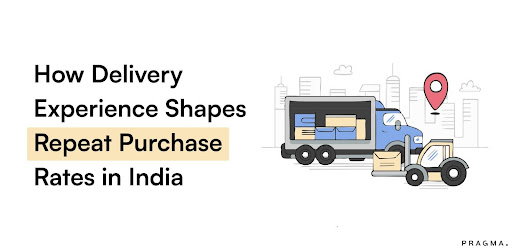
Introduction
“Chrometophobia” - the fear of cash. A term that has never been heard of, let alone be used in a conversation. And yet, here we are. Pointing three fingers at ourselves, after getting acclimated to the love for COD payments in India.
Consumers may love it, but to brands they are quite a risk. Avoiding the Cash On Delivery problems is a huge task, mainly for smaller brands, start-ups & D2C businesses. Implementing effective COD Services to Limit Losses can significantly mitigate these risks.
Understanding Cash on Delivery in the D2C Landscape
With the advancement in digital tech, especially in the field of e-commerce, people have begun to pay more and more attention to online shopping and consumption. The development of e-commerce depends greatly on payment; where every step of payment will definitely affect the quality of the consumption experience of the consumers.
COD is just one of the payment services provided by many e-commerce platforms for the convenience of consumers. Yes. But the risk analysis on the COD payment method proves it to be a great toll to pay.
This is why e-commerce platforms require a response to the various risks brought to the bat by COD, one that does not hinder the brands’ service quality.
In this blog, we will discuss everything on COD orders - right from what it is to its challenges and from preventive measures to its future trends.
Let’s start by understanding Cash On Delivery.
What is Cash on Delivery?
When COD was first optioned as a payment method - users seemed to like the choice (an understatement of the century). In the perspective of the Brand or Retailer, the cost and safety toward COD were mainly considered to improve the user experience and attract existing and potential consumers.
How does Cash On Delivery work?
Customers place orders through a platform such as a website and opt for delivery. They select cash on delivery (COD) as their payment method, deferring payment until the item arrives. Following order placement, the seller generates an invoice, which accompanies the package.
The seller dispatches the package to the customer's specified address. Upon delivery, the customer settles the payment with the courier using either cash or card. The COD sum is subsequently transferred to the logistics partner or courier's account. After deducting handling fees, the logistics company transfers the remaining amount to the seller's account.
Common Challenges Associated with COD
Cash On Delivery problems have a larger degree of occurrence and penetration, indicating that most of the risk factors influence each other.
Quantitatively speaking, an eCommerce business will witness credit risk, payment risk, distribution risk and environmental risk daily.
For e-commerce companies focused on smaller towns, the share of disadvantages of Cash On Delivery business is still high. The majority of Tier 2 cities have adopted digital transactions. Whereas in tiers 3 and 4, COD is still the preferred mode of payment.
On average - Net banking, credit/ debit cards and e-wallets account for 30% of all transactions, while COD is as high as 70%. Even though 48% of those users have switched or are ready to switch from COD to prepaid orders, it’s not something they are entirely convinced of yet.
The cost of cash collection in COD increases the total cost. The rate of returns is also significantly higher in COD as there will be instances where the consumer is unavailable when delivery personnel arrive - so the package is not collected, thereby leading to a return. The incidence of rejection is also higher for COD - meaning, the reverse logistics on the undelivered package is the same as the cost involved in shipping.
Let’s look at some of the major disadvantages of cash on delivery:
Higher losses and additional expenditure
In a COD payment method, the customer can simply refuse to accept the order, making the brand suffer. And for every such return that is processed, your team has to spend more on its Reverse logistics increasing the need for Limiting Return to Origin Shipment:
- The additional cost in processing the return
- Costs for quality check, repackaging, etc.
- Product may be damaged due to mishandling, etc.
High working capital requirements
Generally, it takes 20 to 45 days for the settlement of a COD payment which results in blocking significant working capital for the brand.
Hence, in such cases, the brand requires an expenditure from their end and imaging when 50-60% of the orders of a brand come from COD payment mode, it becomes a huge case dis-balance within the company.
Best Practices for Managing COD Orders
- COD Confirmation – Brands should confirm the order with the customer before shipping, through a quick call or message. This helps avoid fake or accidental orders.
- Set COD Limits - Avoid sending very high-value items on COD. For example, you can allow COD only up to ₹1,000 and encourage prepaid payments for larger orders.
- Encourage the Customers To Do Prepaid Payments - Customers are more likely to pay online if they see a clear benefit. Brands should give them some discounts or benefits if they pay while placing the order. For example, a 5% discount on prepaid orders can be used.
Exploring Alternative Payment Methods For COD
There are a number of Cash On Delivery problems that can turn an order into RTOs, the top 3 would be:
- Impulsive purchases that are not cancelled
- Purchasing the same item twice by mistake
- Bot purchases that go unnoticed
In order to minimize these, Pragma’s automated ‘COD Verify’ confirms the orders once they are placed, and again after a certain period of time.
Note: You can also configure when, and how many times these confirmation messages should be sent
No More manual COD verification calls
The mode of communication could be via WhatsApp, SMS or email - which are better alternatives to telephonic calls. A majority of over 72% prefer WhatsApp and other nonverbal modes of communication as they reduce time and effort, and also aid in Brands Reversing RTO Losses.
Everything that can be automated should be” - we stand by those words for all our services.
Pragma sends automated notifications to your customers at the right time based on customer convenience data. And this Automation is the greatest advantage of COD verification - no manpower, zero human error.
How is this efficient?
If a customer does not confirm the order despite multiple attempts, the system recognises and flags the order. If the customer has read the messages and hasn’t responded, the Pragma system will then recommend cancellation. We know that the probability of an RTO occurring on these orders is greater than them being genuine purchases - so you can officially say that ‘COD verify’ reduces RTO, in turn helping your ROI.
Benefits -
- 10 to 15% of COD verified orders are cancelled by consumers, stopping RTOs at their root
- The messages also open room for advertising offers etc
- The service show customers that you stay up to date with tech
- Repeated fraudulent users can be flagged/blacklisted
- Pragma C2P Conversion ( COD to Prepaid )
After COD Verification, comes Pragma’s COD to Paid conversion, aka Pragma’s C2P.
Once the orders are verified and confirmed, we try to instil the idea of a Pre-paid order into the customer.
How do we do it? Well, it is a simple yet direct approach - We send seller-approved offers to convince customers to convert their orders to paid via WhatsApp, SMS and/or Email.
A method that is proven effective, showing a 25 to 35% increase in paid orders post our C2P initiative.
Benefits -
- Improving cash flow efficiency because of non-cash payments
- Reduces NDRs if C2P conversion is successful. Because the package(s) can be left at the door (upon customer request) or any other similar solution could be followed.
- Reduces RTO loss in case of an NDR
- Improves customer care and in turn improves trust in the brand.
- Pragma’s Automated Return Center
As part of our return we Automate COD Refunds as well - where customers just need to create Cashfree’s Cashgram URL and have it sent automatically via WhatsApp.
No more adding customers’ details to your bank account.
No more customer frustrations on COD refunds
Strategies to Mitigate COD Risks
- COD Verification – Verifying details ensures the order is genuine and reduces return risks. With Pragma, brands can automatically verify COD orders on WhatsApp. The system cross-checks customer details like phone number and address, helping you filter out fake or risky orders before shipping.
- Tie Up with Trusted Delivery Partners
Work with courier companies that handle COD securely and have a good record of remitting payments on time. This reduces your financial risk.
- Add Real-Time Tracking
Keeping customers updated reminds them customer about their order. It also reduces the chances of them refusing the parcel due to confusion or delay.
- Ask for a Partial Advance
Brands should ask for a booking amount on orders. This ensures only genuine buyers go ahead with the purchase.
- Blacklist Fake or Fraudulent Customers
Keep track of customers who repeatedly cancel or return COD orders and block them from placing new ones. Pragma helps in identifying risky orders before they take place.
Case Study: How a Fashion D2C Brand Reduced COD Failures
A mid-sized fashion D2C brand was struggling with cash-on-delivery (COD) challenges. Almost 40% of their COD orders were being returned because customers either placed fake orders, forgot about them, or refused to accept the delivery. This was leading to high RTO costs, wasted shipping, and blocked inventory.
To solve this problem, the brand thought of partnering with Pragma and using its COD confirmation and verification tools.
And the results are excellent. Within just 2 months, the brand saw:
- 30% drop in RTOs
- Higher delivery success rates
- Significant savings on logistics costs
Are you also a D2C brand facing this? So let's connect with Pragma and see the magic
To Wrap it up..
It’s not presently possible to eliminate 100% of COD losses, but we’re getting there, time will tell.
Nothing is Perfect, but anything that gets close is Priceless - And you’ll see that Pragma strives to make COD a risk-free option for eCommerce businesses; with every new upgrade.
Cheers!

Talk to our experts for a customised solution that can maximise your sales funnel
Book a demo




.png)